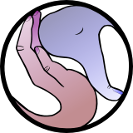

Advice / Facts
Foot Facts

The foot is a complex mechanism that is made of 26 bones and 33 joints. It has over 100 tendons, muscles and ligaments to provide balance, assists in mobility and performs other essential functions like running, walking and jumping. Our feet work hard to support our entire body weight! Your feet mirror your general health. Conditions such as arthritis, diabetes, nerve and circulatory disorders can show their initial symptoms in the feet - some foot conditions can be your first sign of a more serious underlying medical problem.
Basic foot care and hygiene
Our feet are constantly under stress and pressure. It's no wonder that approximately 80% of people have some sort of problem with their feet at some time in their life. Many things can affect the condition of the feet: activity level, occupation, health conditions, poor hygiene and most importantly shoes. Many of the problems arising in the foot are directly linked to poorly fitting shoes and hygiene.

Preventative foot care
- Wash your feet daily - dirt can irritate the skin and lead to infection.
- Dry your feet thoroughly - damp feet can lead to fungal infections.
- Remove hard skin - this can cause pain and discomfort when walking.
- your toe nails trimmed - cut straight and don’t go too low.
- Change hosiery daily - this reduces foot odour and bacteria.
- Wear comfortable shoes - poor fitting shoes can affect the way you walk and can cause all sorts of painful problems with your feet.
Commonly asked questions
What is a corn?
A corn is a small hard area of skin which has become thickened. A corn is usually round in shape. Corns press down into the deeper layers of skin and can be painful.
- Hard corns commonly occur on the top of the smaller toes or on the outer side of the little toe. These are the areas where poorly fitted shoes usually rub most.
- Soft corns sometimes form in between the toes, most commonly between the fourth and fifth toes. These are softer because the sweat between the toes keeps them moist. Soft corns can sometimes become infected if not treated.
What is a callus?
A callus is larger area than a corn and has a less defined edge. These tend to form on the underside of your foot (the sole). They commonly form over the bony areas just underneath your toes. This area takes most of your body weight when you walk. They are usually painless to begin with but can become painful as they get thicker.
What is a verruca?
Verrucas are plantar warts that commonly grow on the soles of the feet. They are caused by the Human Papilloma Virus (HPV). The virus is contagious through person to person contact and is thought to thrive in moist, damp environments. Swimming pools, changing room floors and shower areas are usually where the virus is spread.
Are they serious?
Verrucas are harmless but can be uncomfortable and painful if they develop on a weight bearing part of the foot. In addition, a callus can form over the verruca adding to the discomfort in this area. Most verrucas go away without treatment.
Contact:
Treatments:
- Nail cutting
- Fungal or infected nails
- Thickened nails
- In-growing toe nails
- Verrucas
- Corns and Calluses
- Athlete's foot
- Cracked heels
- Diabetes foot care

